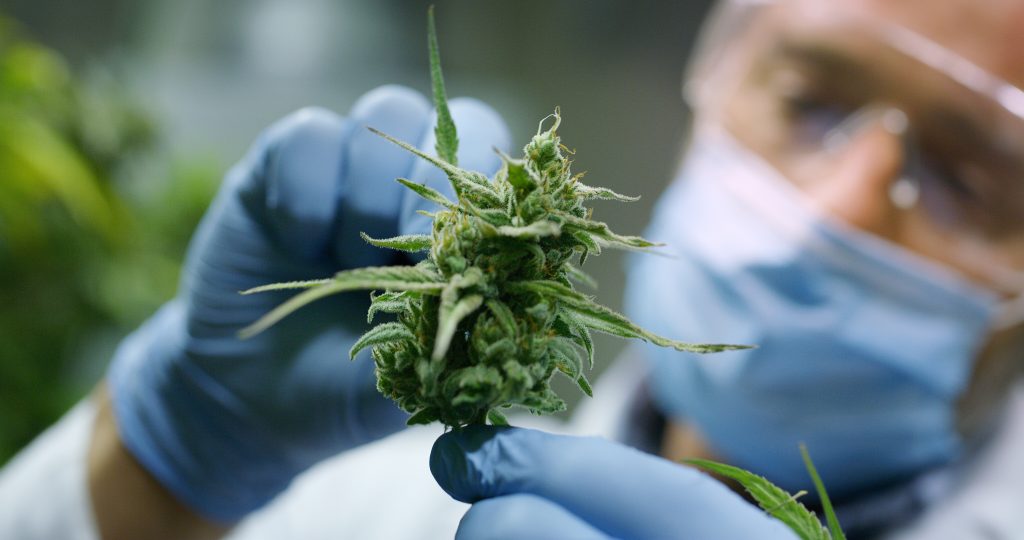If you live in one of the legal states, like California for example, you’re likely aware that cannabis is starting to border on conventional medicine – especially as other options are becoming increasingly restricted.
As an early 90’s kid, this wholehearted acceptance of cannabis is still a bit new to me, but I recently discovered how mainstream it truly is while searching for some type of pain management solution for my grandmother, who suffered from an L3 & L4 spinal fracture.
Now, the operative word here is “searching”. Despite what you or I may have thought, getting pain medication – even for a senior citizen – is becoming rather difficult in this day and age. Due to the ongoing opioid crisis claiming tens of thousands of lives each year, we’ve been forced to take a long, hard look at the current healthcare situation, and inevitably, make some changes that impact everyone.
In an effort to remedy this situation, doctors have been forced to restrict access to opioid pain medication. This, however, is creating a new kind of crisis – where numerous patients battling pain are now left with no recourse. And many of these people are elderly, disabled, or otherwise truly in need of medication. My grandmother is part of this demographic.
Mind you, she’s 94-years-old with a broken back, and has been straight out denied pain medication by multiple different doctors including the ER physician, the neurosurgeon who saw her in the hospital, and her regular doctor who she had to follow up with.
I found that extremely odd. Don’t get me wrong, I will always advocate for safe, natural solutions over pharmaceuticals. But in this situation when a serious injury is involved, I’m all for responsibly-used, stronger pain management solutions.
The Opioid Crisis is Leaving Pain Patients Vulnerable
This problem my grandmother is facing isn’t an isolated issue. It’s becoming widespread, especially in smaller communities. For instance, take my rural town in the Southern California desert. The largest employer in this area is a military base, which, up until recently, was providing health care services to the local veterans and civilians. This is a low-income area with a poverty rate of nearly 35%.
Once the medical services ceased, this forced people to drive nearly an hour away to the nearest pain clinic. Of the people who could make it there, many saw their prescriptions cut in half or denied completely. Just like my grandmother, many of these people are senior citizens with limited means and severe pain.
According to local resident Taylor Garner, his parents retired in this area to be close to the base for medical treatment. At 92-years-old, his mother was cut off from her health care plan with the base and sent to find pain management solutions on her own.
“She’s 92 and it’s hard for her to go down the hill [to the Coachella Valley],” mentions Garner. “She’s crippled and can’t walk. She has been taking pain pills for 20 plus years. Now with the opioid epidemic, they cut her pills in half. My dad gave his life for this country, he died from the effects of agent orange. He would have a fit if he was here. I’m at my wits end trying to find a doctor that will let her have her pills.”
Now trust me when I say that I can see the many faces to this dilemma. I understand that people who are in pain, especially the elderly, just want to find relief and sometimes that comes in the form of a pill. I also understand that nearly every single person’s life in the U.S. has been touched by addiction in some way. That can include losing someone you love to addiction, feeling like your neighborhood is becoming unsafe because of the rising presence of addicts and homelessness, or even being addicted yourself.
Many addicts started with prescription medications in a monitored setting that eventually spiraled out of control – be it from over prescribing, misuse, or any other number of reasons. However, there are many outcomes to consider when trying to regulate someone’s pain medication in this type of volatile situation.
For starters, if they continue taking pain medications regularly with no end in sight, they can develop a tolerance which can lead to addiction and/or overdose. If a patient quits cold-turkey and isn’t properly detoxed, that can lead to health risks like heart attacks and stroke – especially for elderly patients. It can also drive people to the black market if they feel like they have no legitimate or affordable options to turn to.
Evidence for Cannabis
It makes sense that the only way to really curb this issue is not by completely taking away people’s pain therapy treatments, but by offering a safe and equally effective alternative. That said, it’s important to mention that, while my grandmother was being denied pain medication by multiple doctors, every single one of them suggested cannabis. And not in a very medical sort of way, but rather, “Why don’t you try some weed instead?” is what we kept hearing.

Medical cannabis is a proven remedy to manage pain
Now, someone like me would take that suggestion and roll with it, but for a person who is completely unfamiliar with cannabis, that statement leaves more questions than answers. My grandma would have no idea what to shop for, where to find it, what kind of delivery/consumption method to use, which family (indica or sativa), how much she needs to take, etc. When you get to the crux of it, medicating with cannabis can be pretty complicated if you don’t know what you’re doing.
Let’s start by taking a look at the research backing cannabinoids as a viable treatment option for pain. Although cannabis studies are overall lacking, pain is one particular area that has received quite a bit of attention.
In a 2017 study, researchers found that inhaled cannabis is consistently effective in reducing chronic pain “that is not related to cancer”. Additionally, the study discovered that oral delivery of cannabinoids (via softgels for example) was able to improve complications relating to chronic pain such as lack of sleep, appetite changes, and diminished quality of life.
In 2015, Harvard University conducted a comprehensive review of 28 different studies that analyzed the effectiveness of using cannabinoids to manage various types of pain. The researchers revealed that, “Use of marijuana for chronic pain, neuropathic pain, and spasticity due to multiple sclerosis is supported by high quality evidence.”
A slightly older study determined that people suffering from all different types of chronic pain could benefit from the use of cannabinoids, but especially those with neuropathic pain. The study’s conclusion states that cannabis “Is effective but research is needed to decide which subgroups of people benefit most.” This study was published in the British Medical Journal in 2008.
There are additional studies on this subject, as well as hoards of anecdotal evidence from cannabis users across the globe.
Final Words
In case you’re wondering, my grandma tried some combination gummies with a 1:1 ratio of THC:CBD, purchased from a local dispensary in the Coachella Valley. She found it very effective. Her pain was minimal within about 45 minutes of consumption, her appetite was improved, and she was in a much better and more relaxed mood than usual.
While views on cannabis continue to change and evolve, there’s certainly something that can be said about its use as medicinal plant, especially for pain. And this warrants more research, regulatory changes, and societal acceptance overall.
For more stories like this one, subscribe to the Medical Cannabis Weekly Newsletter.









